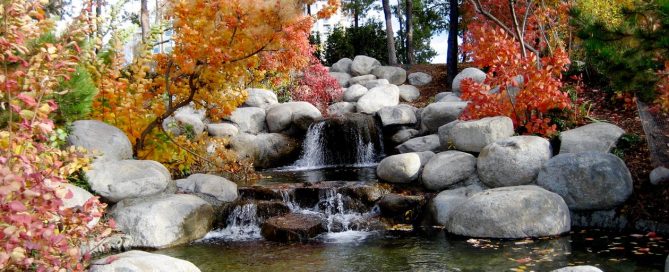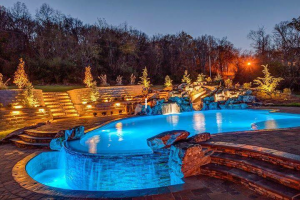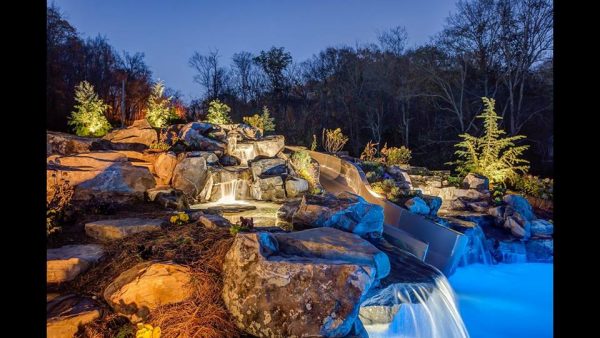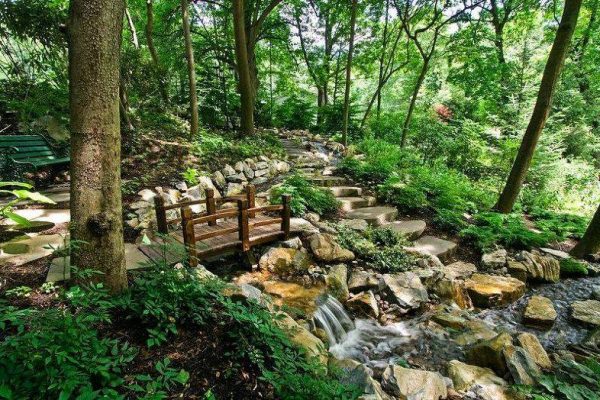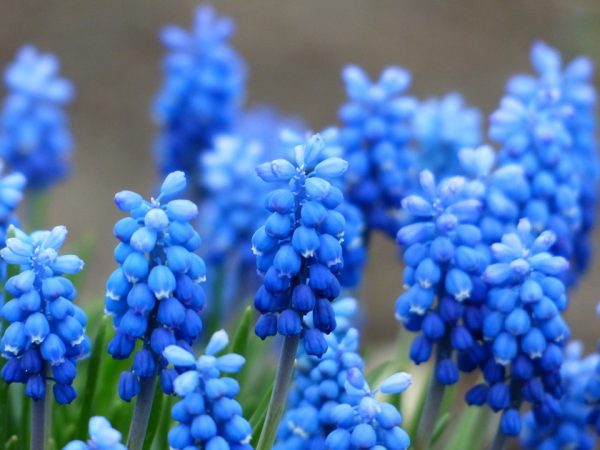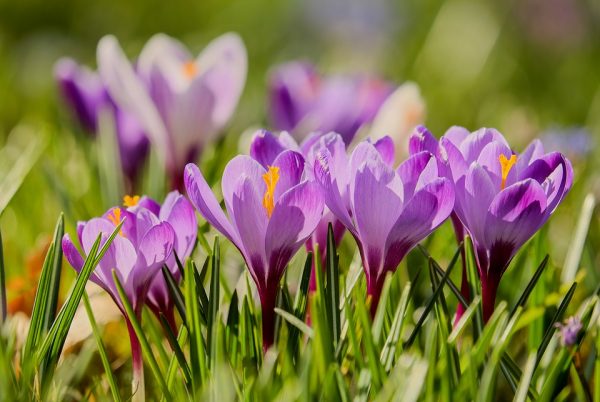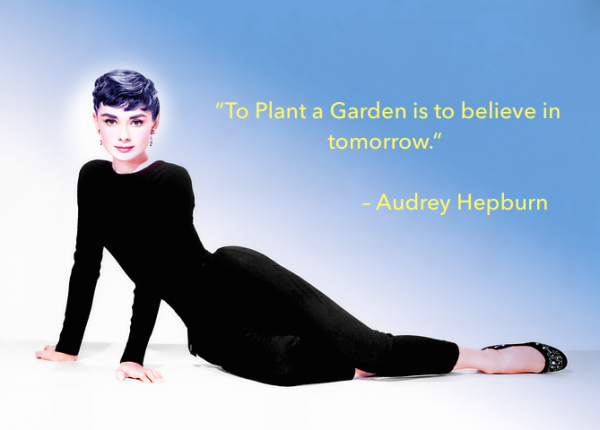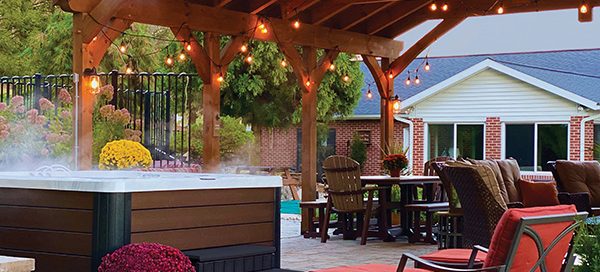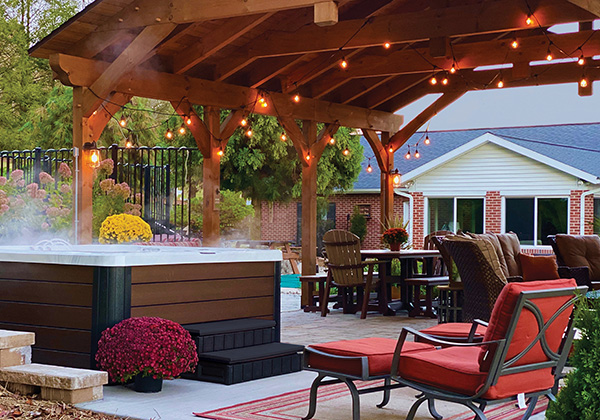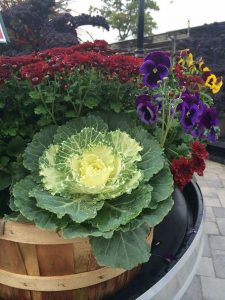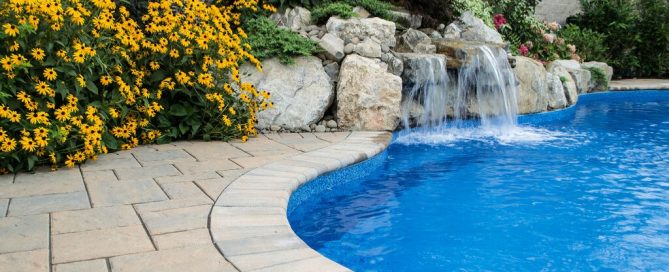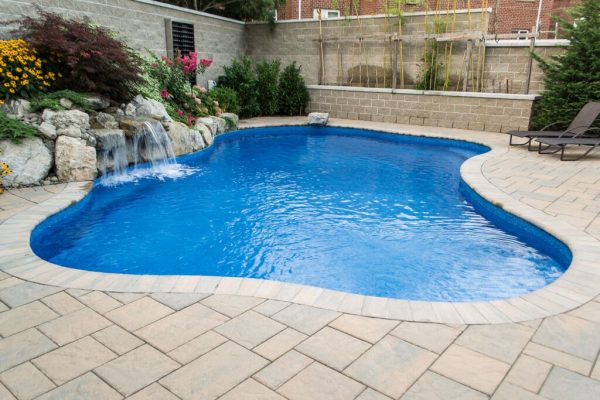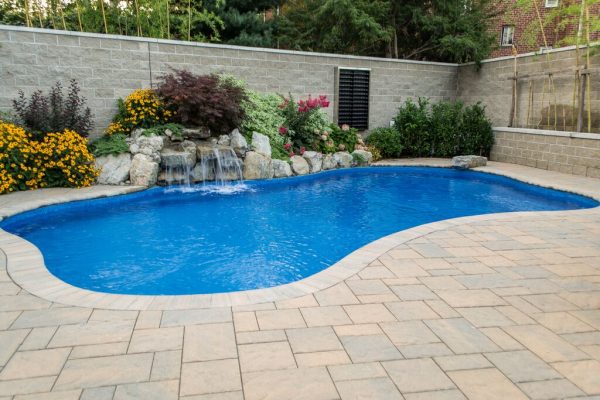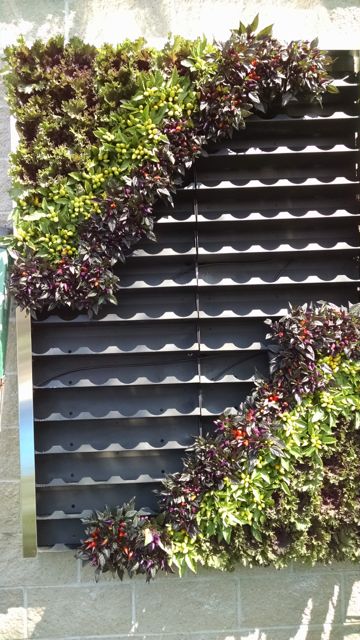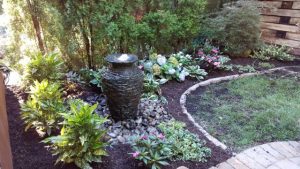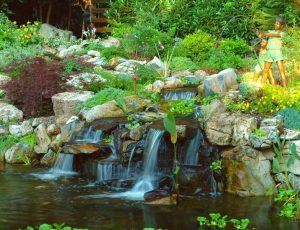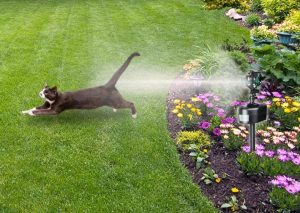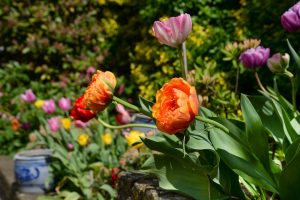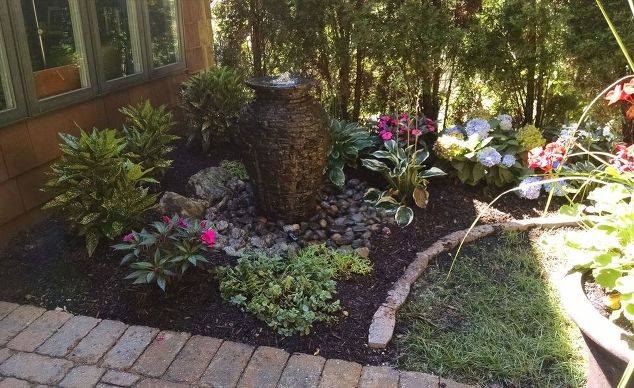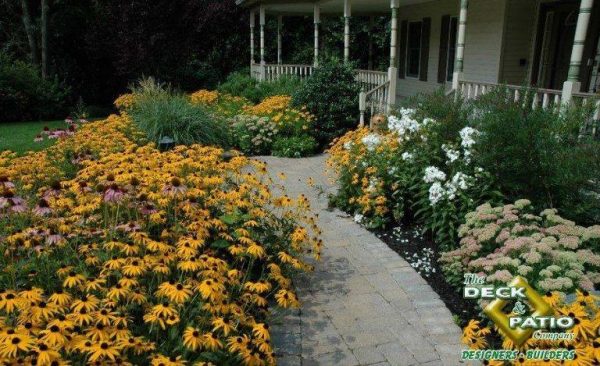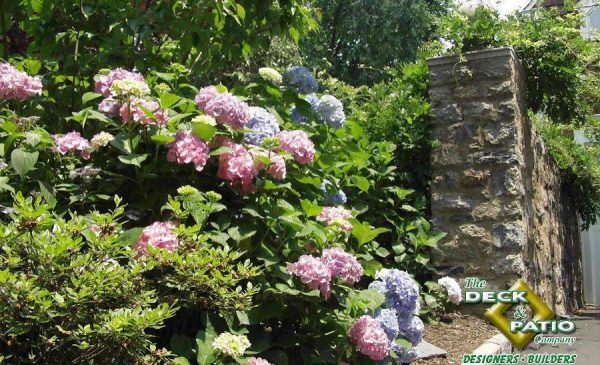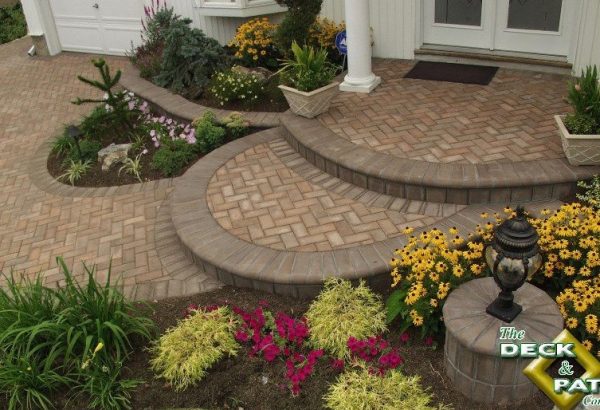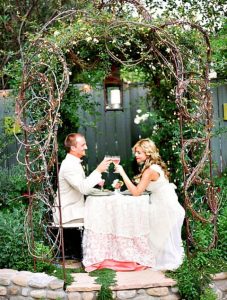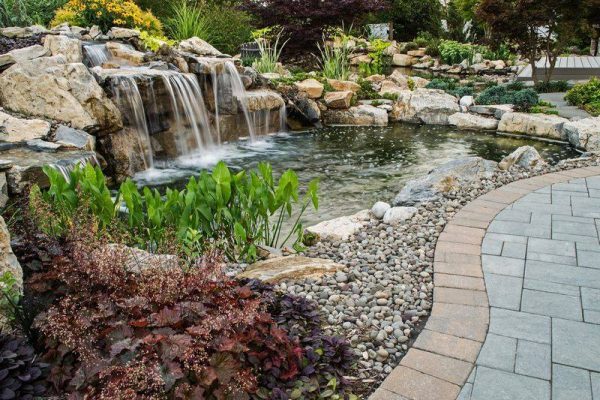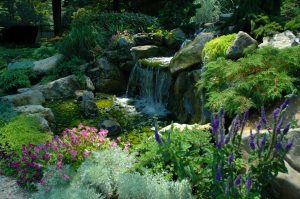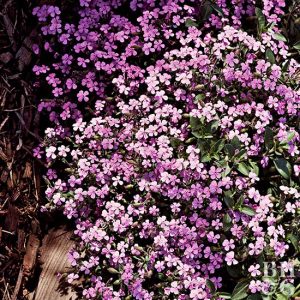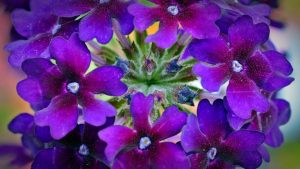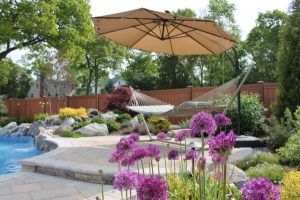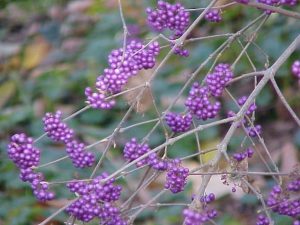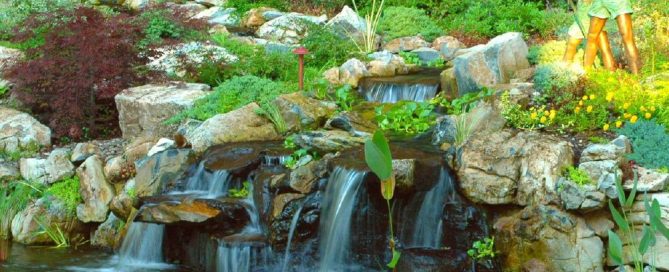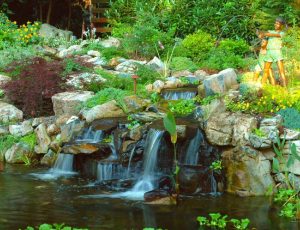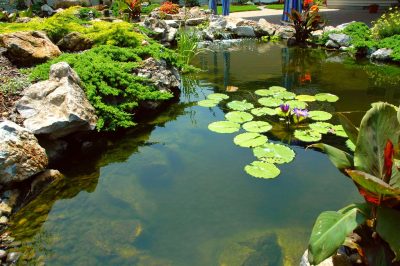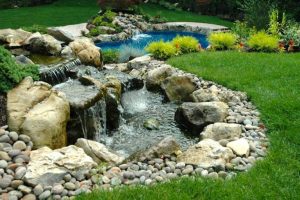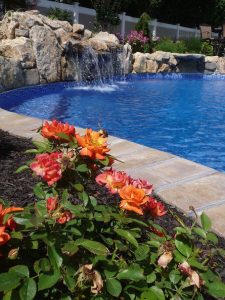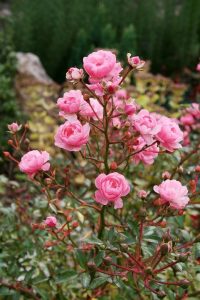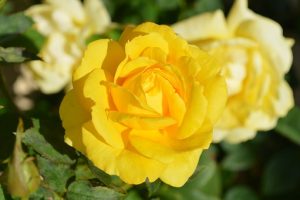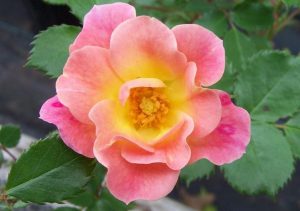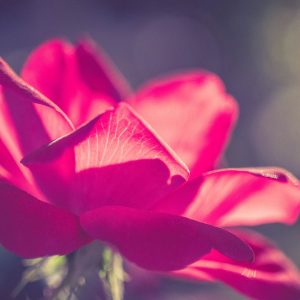Landscaping Trends for 2019
Are you yearning for a bit of outdoor whimsy like attaching a swing to your pergola? Or perhaps you’re hungering for backyard woodland garden design? Maybe you’ve been asking your landscaper to come up with a stylish entryway to your home?
If any of these fit your mood lately, you may be what the pros call a trendsetter. Because these very ideas are some of the emerging landscaping trends for 2019 according to HGTV.
Deck and Patio was particularly delighted to note that water features continue their rise in HGTV’s landscaping trends. Ponds, streams, waterfalls, including pool water features, with picturesque viewing areas, are specialities of our firm.
“When you have passion for your work, it’s nice to know it’s shared by your community and by those in the know,” says our own Dave Stockwell. “As landscape and garden designers, we’ve built a reputation as go-to experts for water features.”
Indeed. Deck and Patio has constructed over 300 ponds and water features on Long Island alone. However, good news spreads and we’ve also been invited out-of-state to Kentucky and Tennessee to design/construct dramatic water features for special pool projects.”
Here is another Pool Kings project which was highlighted on one of their HGTV television episodes. The water feature project was in Tennessee — quite a distance from our usual Long Island, NY, area of operation.
Speaking of Whimsy
We don’t know if this qualifies as whimsical, but it definitely is unique, imaginative and totally unexpected we believe. It was a Deck and Patio design idea we suggested when building a backyard pond for clients. We added stepping stones (unseen) which go from their new patio out to the large stone island where they can escape to relax and enjoy their pond up close.
Beautiful Woodland Garden Paths
These Deck and Patio clients had a beautiful wooded yard with some pre-existing nature walks. They also had a bridge. We designed stone steps, streams, and waterfalls in an around the bridge, just below a comfortable park-style bench.
In addition, we added beautiful ground cover and leafy plants. The point was to increase their enjoyment of being out in their own private refuge without disturbing the property’s natural woodland.
Next week, our blog will highlight a few more of HGTV trends and how Deck and Patio is keeping Long Islanders (as well as those farther south) landscaped with the times.

